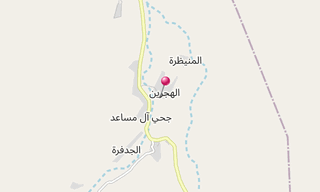Narrowly, Hadhramaut (Hadhramout, Hadramawt or Ḥaḍramūt) refers to the historical Qu’aiti and Kathiri sultanates, which were in the Aden Protectorate overseen by the British Resident at Aden until their abolition upon the independence of South Yemen in 1967. The Qu’aiti sultans ruled the vast majority of Hadhramaut, under a loose British protectorate, the Aden Protectorate, from 1882 to 1967, when the Hadhramaut was annexed by South Yemen.
The Qu’aiti dynasty was founded by ’Umar bin Awadh al-Qu’aiti, a Yafa’i tribesman whose wealth and influence as hereditary Jemadar of the Nizam of Hyderabad’s armed forces enabled him to establish the Qu’aiti dynasty in the latter half of the 19th century, winning British recognition of his paramount status in the region, in 1882. The British Government and the traditional and scholarly sultan Ali bin Salah signed a treaty in 1937 appointing the British government as “advisors” in Hadhramaut. The British exiled him to Aden in 1945, but the Protectorate lasted until 1967.

-Wadi-Hadramout.hero.landscape.jpg?w=1600)

-Wadi-Hadramout.jpg?w=256)
-Wadi-Hadramout.jpg?w=256)
-Wadi-Hadramout.jpg?w=256)
-Wadi-Hadramout.jpg?w=256)
-Wadi-Hadramout.jpg?w=256)
-Wadi-Hadramout.jpg?w=256)
-Wadi-Hadramout.jpg?w=256)
-Wadi-Hadramout.jpg?w=256)
-Wadi-Hadramout.jpg?w=256)
-Wadi-Hadramout.jpg?w=256)
-Wadi-Hadramout.jpg?w=256)
-Wadi-Hadramout.jpg?w=256)
-Wadi-Hadramout.jpg?w=256)
-Wadi-Hadramout.jpg?w=256)
-Wadi-Hadramout.jpg?w=256)
-Wadi-Hadramout.jpg?w=256)
-Wadi-Hadramout.jpg?w=256)
-Wadi-Hadramout.jpg?w=256)
-Wadi-Hadramout.jpg?w=256)
-Wadi-Hadramout.jpg?w=256)
-Wadi-Hadramout.jpg?w=256)
-Wadi-Hadramout.jpg?w=256)
-Wadi-Hadramout.jpg?w=256)
-Wadi-Hadramout.jpg?w=256)
-Wadi-Hadramout.jpg?w=256)
-Wadi-Hadramout.jpg?w=256)
-Wadi-Hadramout.jpg?w=256)
-Sanaa.hero.jpg?w=320)
